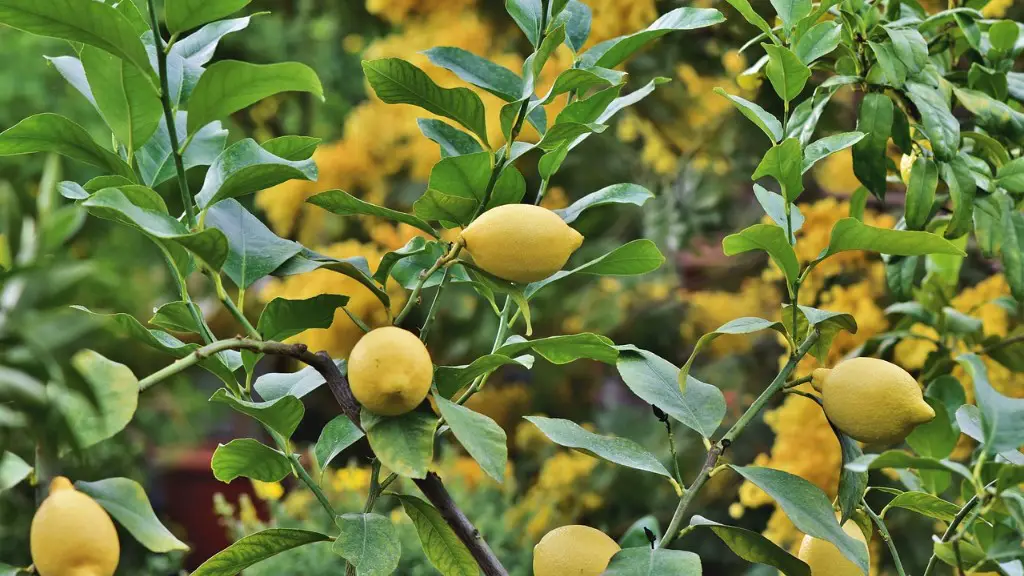The loss of leaves from my lemon tree can be a worrying sight, but it is not necessarily a sign of trouble. Loss of leaves is usually caused by environmental factors, such as drought, poor soil, too much or too little light or temperature fluctuations. These problems can be solved if the environmental conditions can be improved. Here I’ll discuss why my lemon tree is losing leaves, and how I can prevent further loss.
When a lemon tree is affected by inadequate light, it responds by dropping leaves in order to reduce its surface area, thus reducing water loss. My lemon tree’s light supply is paramount as lemon trees need plenty of bright light to maintain growth and optimal health. I’ll need to move the tree to a location with more direct sunlight.
High temperatures can also be a factor in leaf loss. If the temperature of the soil and the air around my lemon tree gets too hot for the tree to survive, it will begin to drop its leaves in an effort to cool itself down. If this is the case, I can adjust the temperature by providing the tree with some shade in hot weather.
When irrigation is incorrectly done, this may lead to the root-zone being either too wet or too dry. If the root-zone is too wet, the leaves may drop from the tree as an indication of a waterlogging problem. If the root zone is too dry, the lemon tree will resort to dropping its old leaves in order to conserve what little water it has. This is not something that I should let happen, as it risks taxing my tree, which may cause further damage. Proper irrigation and a water-sensing device can help avoid this.
Fertilising my lemon tree is also important, as this will help it maintain healthy growth. If the soil around my tree is deficient in a certain nutrient, the leaves may begin to yellow, indicating the lack of nutrients in the soil. My lemon tree can then benefit from some fertiliser to restore the soil’s optimal nutrient level.
Occasionally, my lemon tree may lose some leaves due to wind and storm damage, or due to heavy snow or frost. In these scenarios, the fallen leaves can be collected, and the tree can be protected with tree wrap or a shade cloth during the winter season. The tree can also be protected from strong winds by using a fence or using protective tree tie-wrap.
Lastly, if I suspect that pests or diseases are causing the loss of leaves on my lemon tree, then I should treat them promptly. Treatments may involve the application of insecticide for pests or fungicide for diseases. With regular pruning, I can also remove infected parts of the tree in order to avoid spreading the problem.
Loss of Leaves Due to Environmental Conditions
Environmental conditions can manifest in the form of light, temperature, and humidity levels. Lemon trees are particularly sensitive to light levels and will respond by dropping leaves if they do not receive enough light. Additionally, excess exposure to sunlight will also cause the leaves to yellow and eventually drop. High temperatures can cause leaves to fall off as well, as the tree attempts to cool itself. Conversely, inadequate watering can lead to the lemon tree dropping leaves. It is thus important to maintain a consistent level of water to the root zone of the tree.
Fertilising My Lemon Tree
Fertilising my lemon tree is highly beneficial to its health, as it ensures that the soil around the tree is nutrient-rich and optimal for its growth. Lemon trees can be fertilised with compost, manure or synthetic fertilisers. I should ensure that I use the correct type of fertiliser, otherwise I may inadvertently stress the tree and may lead to leaf loss. Additionally, I should avoid over-fertilising, as this can also cause stress and damage to the tree.
Protecting My Lemon Tree From Damage
During times of strong winds and storms, it is important to protect my lemon tree by tying it securely and shielding it with a tree wrap or shade cloth. Additionally, fencing and selecting the right planting site can also help protect the tree from strong winds. During winter, a shade cloth or tree wrap can help to protect the lemon tree from frost damage as well.
Treating Pests and Diseases
Inspecting my lemon tree regularly can help detect pests and diseases. If I spot any pests or diseases, I should take the necessary measures or contact a professional who can help with treatment. The most common treatments for pests involve the application of insecticides, and for diseases, fungicides. Additionally, pruning the infected area can help to stop the spread, and the discarded parts of the tree disposed of either through burning or burying.


